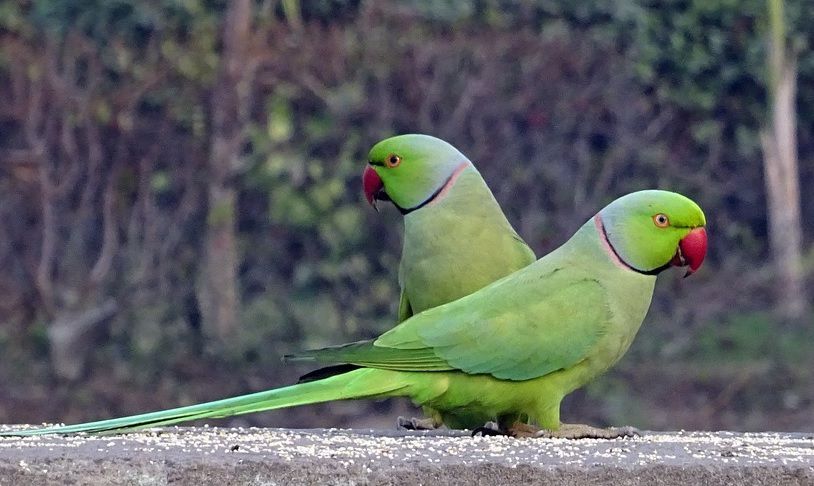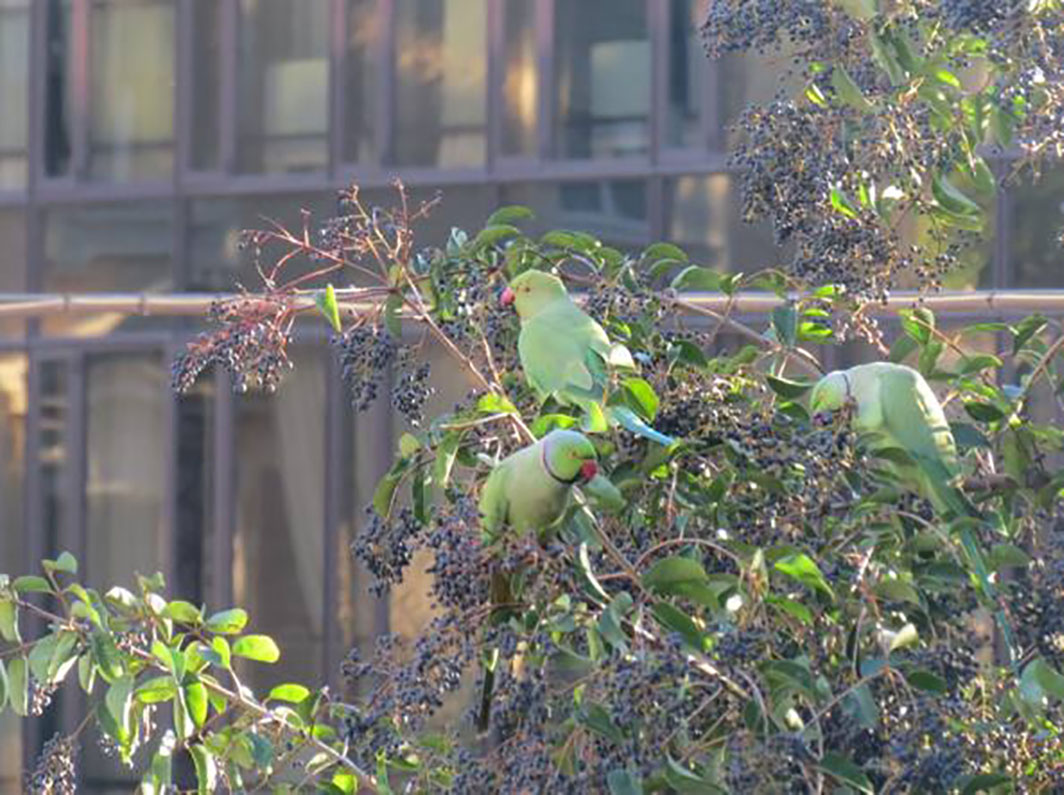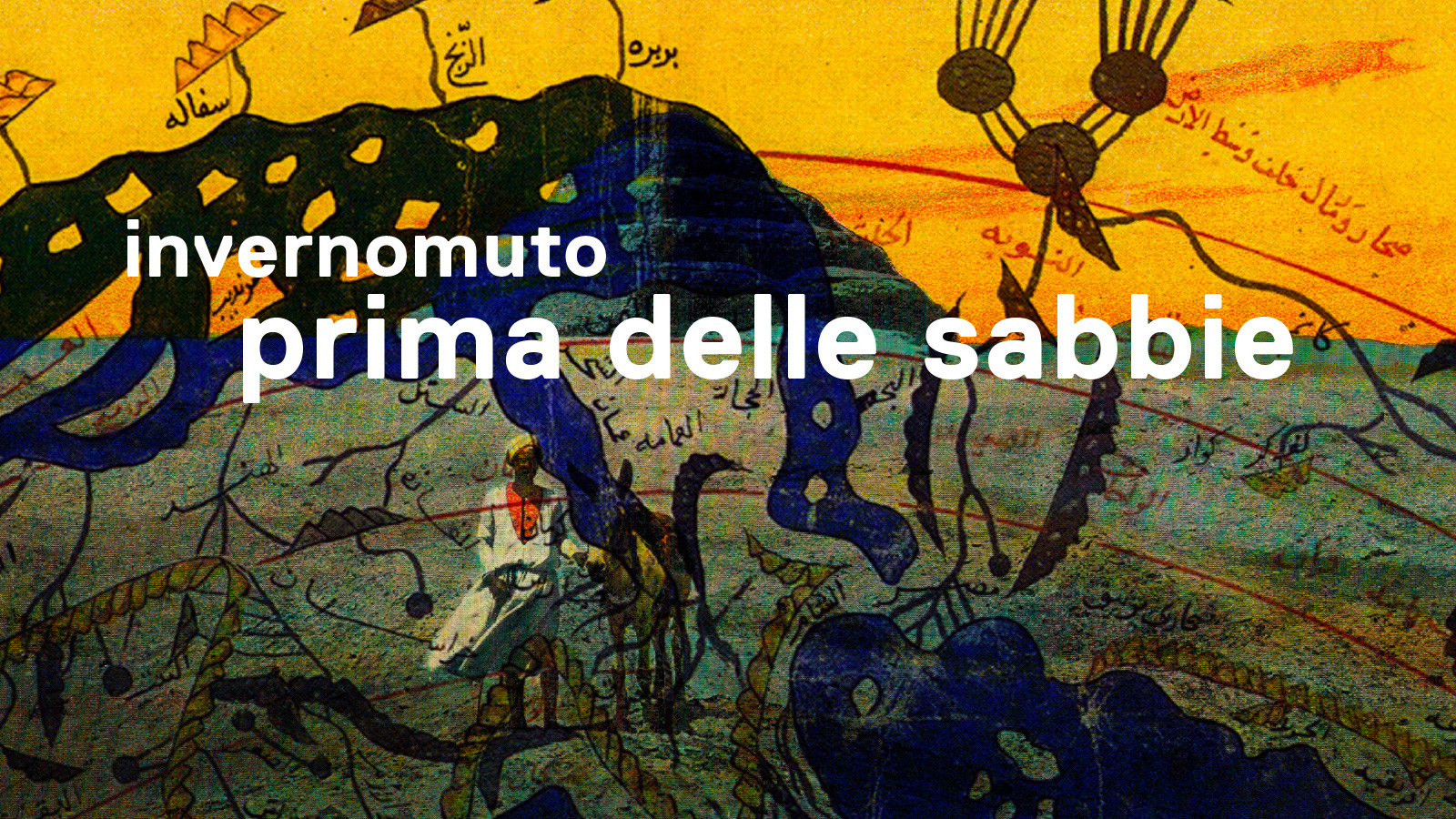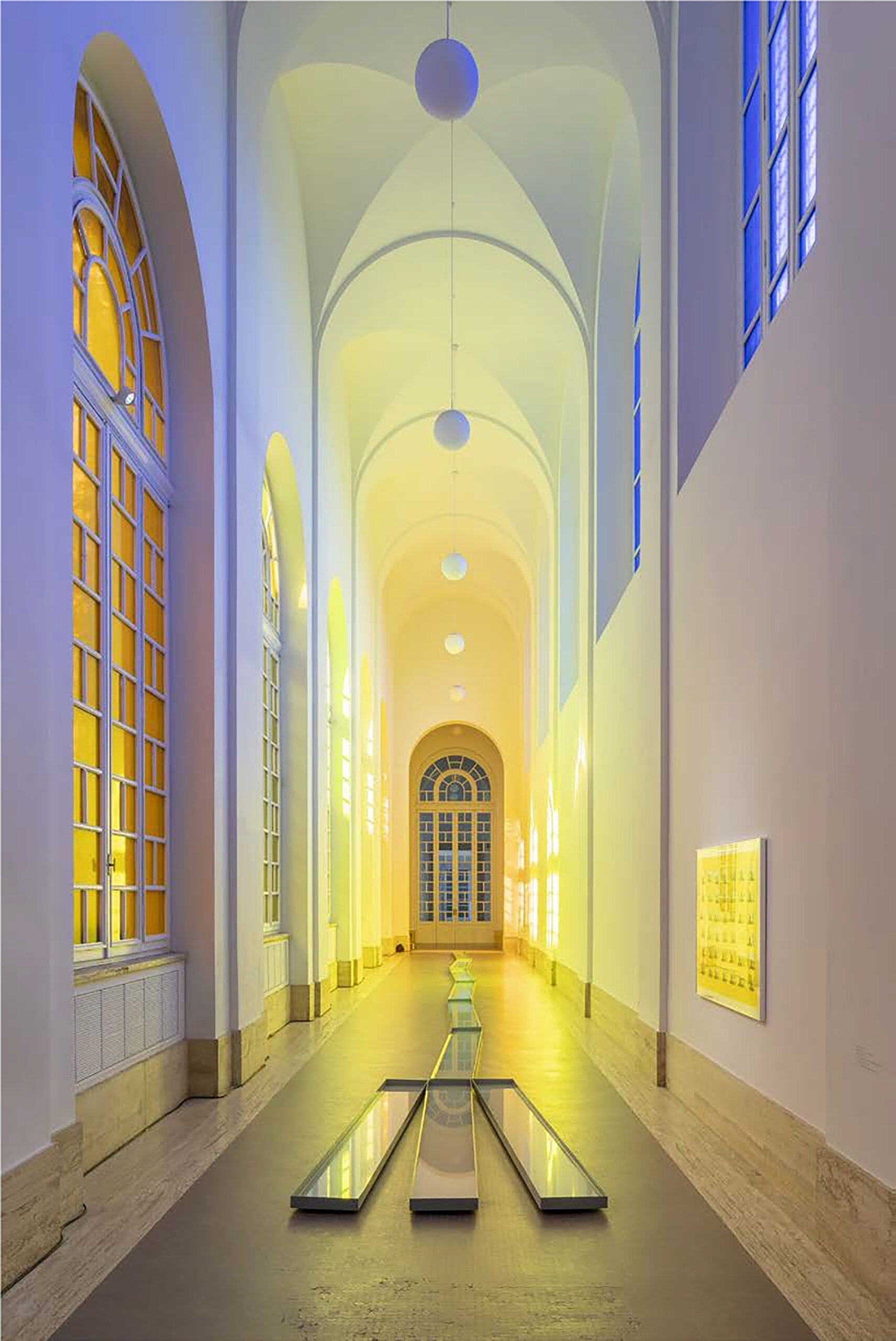Before the Lovebirds
Text ispired by the exhibition Prima delle sabbie by Invernomuto at Galleria Nazionale d’Arte Moderna e Contemporanea, Rome, October 2019 – January 2020.

During my studies in Siena, Tuscany, years ago, I was often hosted by a friend in Florence. I remember us chatting and smoking in front of the open window of his kitchen. One day he seemed to have noticed something among the trees and he started to speak about green parrots invading Florence, a conversation I considered almost surreal at that time. Despite the episode wasn’t so relevant, I’ve recently gone back to it in my mind, and it has become one of my most vivid memories of that friend, his house, Florence, and of those years studying in Tuscany.
Sometime after, while engaging in curating an exhibition in Villa Borghese in Rome, I worked with a visual artist who badly wanted to make a site specific installation around the theme of green parrots (unluckily, she had to settle for something completely different at the end); but because of her initial idea, I had a chance to converse more deeply around the topic. What she told me made me give credit to the words of my friend in Florence; I therefore started noticing them – the green parrots – slowly but more and more extensively ‘invading’ Rome.
Once, in 2018, I was walking in Ostia Antica with the writer Juliet Jacques, while preparing with her a reading-performance event, and I saw a couple of green parrots passing over our heads to find refugee among some tree branches. I convinced her to go check on the birds and we discovered a huge nest. I began telling her the whole story. The story of the “Agapornis” parrot, literally “birds loving each other” and, more commonly, called Lovebirds, slowly making new homes not only in Rome but in many more Italian cities, as my Tuscan friend predicted. She did not believe it, or she did not have such a huge interest in it. I can guess why. It was April and it was already incredibly warm in Rome; she simply made an easy assumption in her mind: parrots+Rome makes a perfect match. And, honestly, she was right.
The question that was torturing me was when they came; the why they stay has an easy answer.

Everything has its moment of fashion: in the Eighties it was cool to have Lovebirds at home, in their cage, of course as a couple; as it was trendy, but less problematic, having exotic turtles. A former schoolmate of mine, whom I run into in my area during the first major lockdown back in March 2020, was actually one of those who showed me a turtle when we were kids; its name is Timothy, and apparently, it has been living in the same little garden since 1984.
At one point having these exotic animals fell out of fashion and – as an Italian website mentions – they were set free in the cities. An act of freedom. I imagine all these people in the same years opening their cages while at the window or leaving turtles to city parks’ lakes. An action that caused a drastic change in the fauna and in our soundscapes and landscapes.
I cannot get used to the sounds of the Lovebirds passing; it always causes me a good amount of discomfort. I did not grow up with hearing them, so the only memory they trigger belongs to the facts I just narrated to you, in that exact order. Probably a younger generation have some actual memories associated with them, as mine of dawn chorus in my early mornings/late nights in my 20s.
A bird is always beautiful. A tropical bird is even marvellous but my face will never take the shape of wonder when I see/hear Lovebirds in Rome, as they just worry me.
During the lockdown of the first wave of the COVID-19 pandemic in Italy, I would see them a lot, flying happily in the trees that surround my mother’s home. The absence of cars and of smog made the animals behaved more freely; for instance, the cat of one of my mom’s neighbours started adventuring further away from the building; I would see it confidently hunting in the main square while, before the lockdown, it wouldn’t even dare to cross a street. I can say the cat made me smile warmly, but I didn’t feel like smiling at all when so many Lovebirds started to appear all around in an alarmingly way.
I imagine the desert will come soon, after the tropical harsh phase.
Exactly like for Sahara, Egypt before the sands, L’Egitto prima delle sabbie.
Prima delle sabbie (“Before the Sands”) is the title of a site-specific installation that was displayed in the Connection Gallery of Galleria Nazionale d’Arte Moderna e Contemporanea in Rome, between 2019 and 2020. It was part of a program, curated by Massimo Minini, that displayed new commissioned works created by young artists.
Prima delle sabbie was conceived by the Milanese duo Invernomuto who have been working together since 2003; they are Simone Bertuzzi (1983) and Simone Trabucchi (1982).
Not much before this show the artists had spent a long period in Rome thanks to a residency at American Academy; while invested in many projects, they also began observing Lovebirds, and they came to realize that this invasion is a specific feature of Rome (and it makes me think Lovebirds will never invade Milan, for the weather and for the smog).

The duo Invernomuto realizes multimedia installations in which sound plays always a major role and their work could be very well inserted in Foster’s definition of “artist as ethnographer”.[1] Their research and their aesthetics recalls artists of the level of Mike Kelley and Jeremy Deller with their use of folk culture, subcultures and in their in depth studies of vernacular traditions as well as their constant collaboration with other professionals such as musicians, performers, and scholars.
Having analysed the ghosts of Italian colonialism with their long project Negus (2011-2016) which led them to Ethiopia and to Jamaica, in 2017 Invernomuto started to focalize their attention to Mediterranean, thanks to the invitation by Manifesta 12 in Palermo, where the focus was on themes such as the Migration.
In that case, Invernomuto conceived a lecture-listening session-performance trilogy (and online platform) named Black Med, later selected for the performance programme of 58th Venice Biennale 2019; it won also the 7th Edition of the Italian Council. The title is a direct reference to the term Black Mediterranean coined by the professor Alessandra Di Maio in 2012 and inspired by The Black Atlantic theory by Paul Gilroy.[2]
The Black Mediterranean defines the liminal space of exchange and migratory Fluxus and also the territory of racial subordination and oppression. The Black Med by Invernomuto “aims at intercepting the trajectories that sounds trace passing through this protean area, with a series of live acts and listening sessions”.[3]

Invernomuto, Prima delle Sabbie, site specific installation, 2019, 8 metal halide lights, coloured PVC films, audio speaker, green parrots. Installation views at Galleria Nazionale d’Arte Moderna e Contemporanea, Rome. Ph: Giulio Boem
Their attention is centered now on the Mediterranean Sea and Prima delle sabbie at Galleria Nazionale d’Arte Moderna e Contemporanea in Rome focuses on the longest river in the world, the Nile, whose delta flows into the Mediterranean. The title of the installation was taken from a not well-known album by the songwriter Franco Battiato, published in 1977: L’Egitto prima delle sabbie, a true minimalistic electronic experiment.
The first track of the album, remixed by the artists, goes on loop in an ambient which changes colours as the weather changes, and the time passes by, thanks to yellow and blue films applied on the huge windows that separates one courtyard of the museum from the actual corridor where the exhibition is set. On the walls, across from the windows, we have Egypt in the form of a series of postcards with interventions by the artists which put us exactly in the present tense, between the past way of considering it through stereotyped-post carded visions and futuristic presence of a robot, the one from the film Terminator. Well, isn’t that from the past too?
Between the coloured and iridescent windows and the frozen portraits of the postcards, a resurrected sculpture lays on the floor. It is the Fiume con foce tripla (“River With Triple Estuary”) by Pino Pascali (Bari, 1935 – Rome 1968) realized in 1968 for a show in New York that never took place as Pascali died very young and very abruptly in a motor accident not far away from the Galleria Nazionale. This sculpture, part of the series Elementi naturali (“Natural Elements”) that Pascali was producing in his last years, was acquired by the director of the museum Palma Bucarelli in 1969 and it was left in the storage for several years because of its bad conditions. That it is the moment when the magic happens. Invernomuto have acquired a lot of knowledge of Roman myths, habits and its art history, therefore they asked to restore the sculpture just as far as it was necessary to see it alive again.
While we walk along the sculpture – being very careful as if we are in the proximity of a God (Pascali has that reputation in Rome) – the lights change slowly, the music is mesmerising, we are distracted by some tourists taking selfies in this unusual light, and we feel the emptiness, the one of the desert. The Lovebirds’ voices wake us up – inserted in the remix of Invernomuto – and forces us in a face to face with the killer cyborg.
